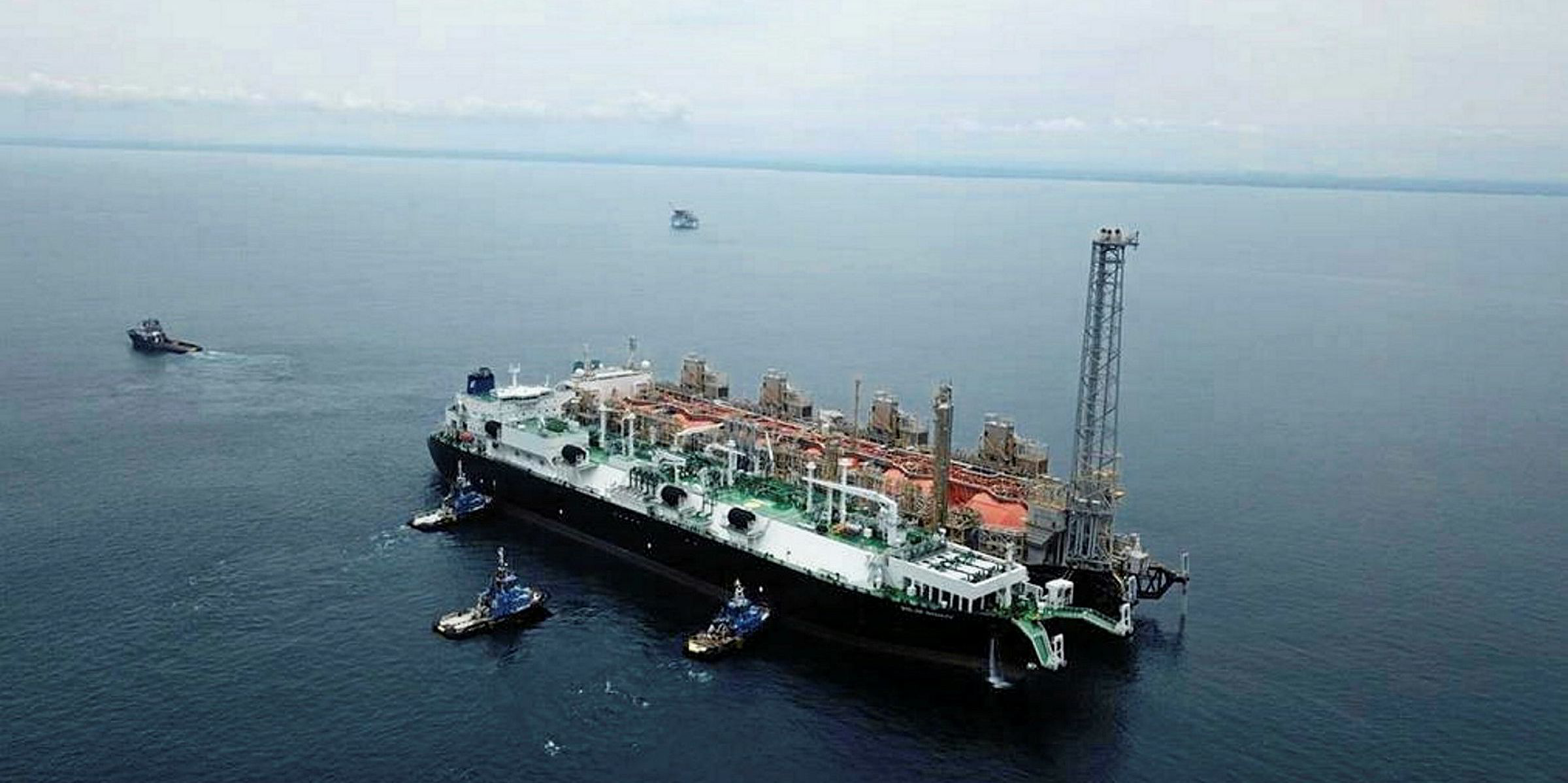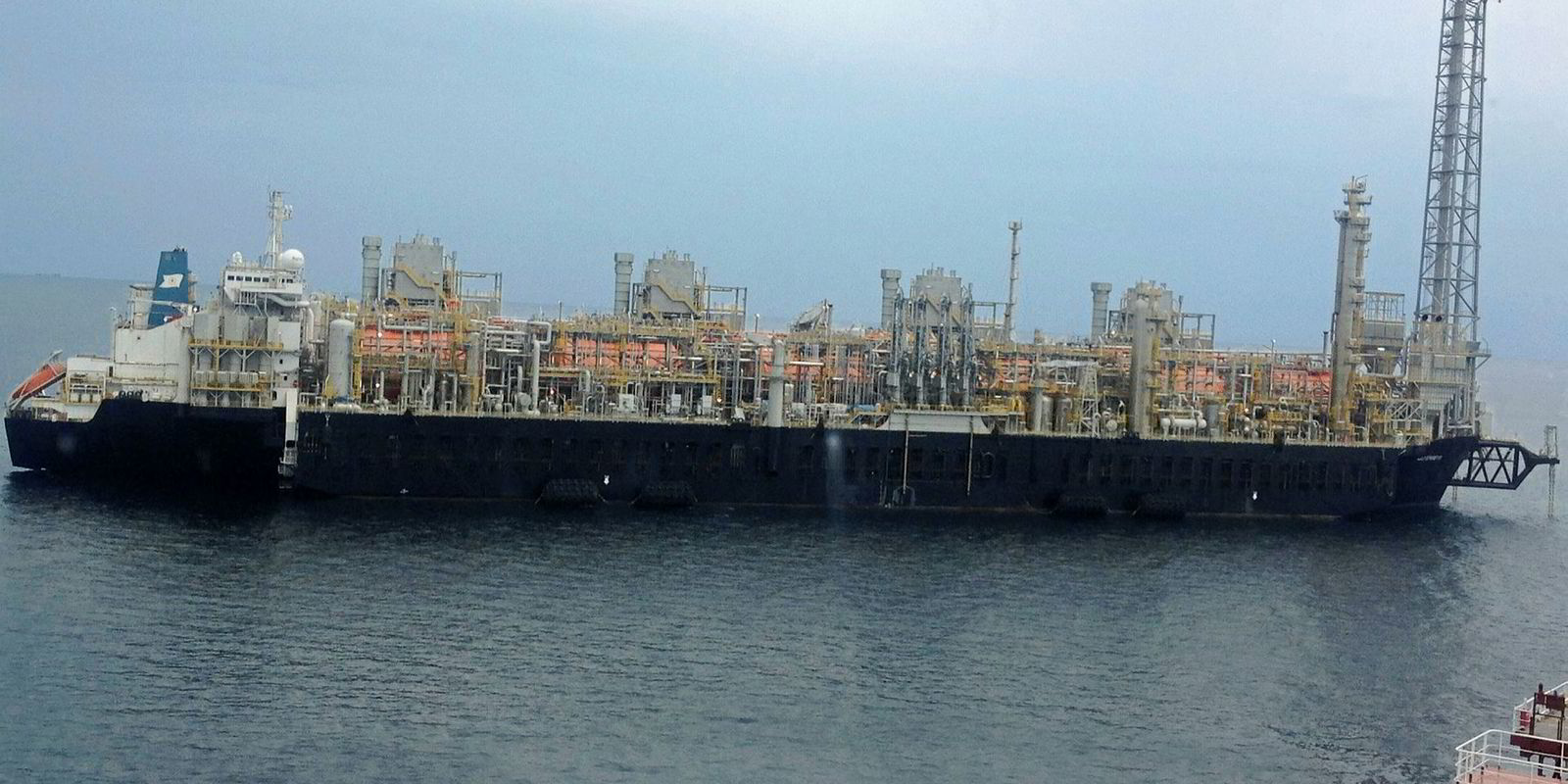A Brazil-bound floating storage and regasification unit for Golar LNG has stopped off at the company’s first floating LNG (FLNG) producer in Cameroon to receive its maiden cargo.
The 170,000-cbm Golar Nanook (built 2018) has been alongside Golar LNG’s 1.2-million tonnes per annum FLNG unit Hilli Episeyo over the last few days taking on a commissioning cargo.
The volumes are the sixteenth cargo to be produced by Hilli Episeyo, which exported its first shipment in May 2018.
After taking on the cooldown volumes, Golar Nanook is due to head to Brazil where the LNG will be used to kick off commissioning activities at the Sergipe power plant where the FSRU will serve as the LNG import facility.
Golar said the Sergipe power plant is now in an advanced state of construction and scheduled to start operations on 1 January 2020.
Speaking in a results briefing chief executive Iain Ross said the soft yoke mooring base for the FSRU is in position, water and gas pipelines are in place and piles are currently being installed.
Ross said Golar Power, which is developing the Sergipe project, is also advancing discussions to use some of the available spare capacity in Golar Nanook to support “local LNG field opportunities”.
He explained that while Sergipe will provide the base load contract for Golar Nanook, two-thirds for the FSRU’s capacity could be used for other purposes.
He said the set-up of small-scale focused Avenir LNG, in which Golar is working in partnership with Stolt-Nielsen and Hoegh LNG, will allow the company to breakbulk cargoes from the FSRU and “further enhance our ability to move around smaller parcels of LNG and benefit from this market.”
Ross said this market is still immature in Brazil but added that there are strong signs of interest in LNG for trucking and diesel for distributed LNG local power generation.
“Further FSRU and associated downstream infrastructure opportunities are being pursued in Brazil,” he said.






